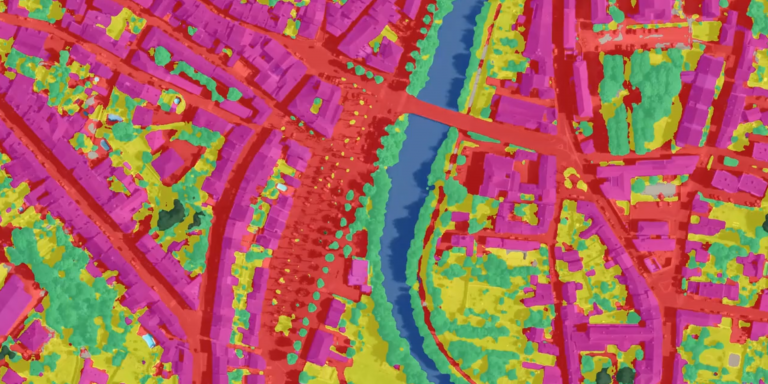
It is estimated that in France, 20,000 to 30,000 hectares are artificially created each year. Artificialization of soils has consequences on biodiversity but also on global warming, flooding… The French government has asked the IGN to map the impacts of human activity on the environment (mapping of the Anthropocene) throughout the territory. To meet this challenge of continuous observation, the IGN has set up the Geocommons approach at the end of 2021 and published the “IGN Artificial Intelligence Roadmap 2022-2024” last February. The first resources concerning the Gers department are already available on the geoservices.ign.fr website.
Created in 1940, the IGN (Institut Géographique National) became the Institut National de l’Information Géographique et Forestière (National Institute of Geographic and Forestry Information) on January 1, 2012, following the integration of the IFN (National Forestry Inventory). Every 3 years, thanks to its aerial fleet (four Beechcraft King Air 200 aircraft), it photographs the entire national territory with a digital camera at a resolution of 25 cm. The satellite images are provided by the SIS (Service de l’Imagerie Spatiale) that the IGN created in Toulouse in the 1990s near the Centre National d’Etudes Spatiales (CNES), with which it routinely collaborates.
The fight against land artificialisation, a major axis of the national biodiversity plan
One of the objectives of the government’s biodiversity plan is to achieve “zero net artificialisation”. This means limiting the consumption of new spaces as much as possible and, when this is impossible, “returning to nature” the equivalent of the areas consumed. It is to meet this challenge that the Observatory of Artificialization of Soil was created in 2019, it also allows everyone to follow the evolution of the consumption of space at the scale of each municipality.
Originally based on land files, it is now enriched by the geographic data repository produced by the IGN, in collaboration with CEREMA and INRAE, according to the OCS GE (Large Scale Land Use) nomenclature. This mapping will benefit from a budget of 20 million euros, the DGALN (Directorate of the Ministry of Ecological Transition in charge of Development, Housing and Nature) is the project manager.
The objective for IGN is to report on the state of health of forests, the erosion of the relief and the evolution of waterways, the artificialization of soils, the potential of biodiversity and other themes to be defined in support of public policies. Local authorities, start-ups and industrial partners have a role to play in this innovative process.
An innovative production process based on AI and deep learning
IGN relies on AI to automate its initial production chains and update geographic data describing land use and occupation, and more specifically on deep learning to automatically recognize objects (buildings, trees, asphalt surfaces, etc.) that contribute to land use classes on aerial or spatial images.
Open resources for common enrichment
The IGN is making available in open data all the resources that contribute to the automated process on the geoservices.ign.fr website, which provides access to :
- annotations (data used to train deep learning models),
- deep learning datasets,
- AI models and associated computer codes,
- deep learning prediction maps.
The availability of these resources offers AI experts the possibility to enrich the data and reuse them to train their own models: application of land cover models on new images, training of new models on new nomenclatures, enrichment of annotations… Other data and codes will be regularly made available to enrich the training models in a collaborative mode in a digital commons approach.
The entire French territory covered by 2024
Coverage of metropolitan France and its overseas departments and regions will be achieved by 2024, with the production of two vintages per department. A deep learning model called “France entière” is trained to generate predictions and the OCS GE product on all departments.
The departments 35, 33, 62, 69, 67, 72, 77, 83 and 91 are currently being produced, and the intermediate data and products will be available progressively between December 2022 and March 2023, on the geoservices.ign.fr website.
Translated from L’IGN mise sur l’IA et le deep dearning pour enrichir les données d’occupation des sols









